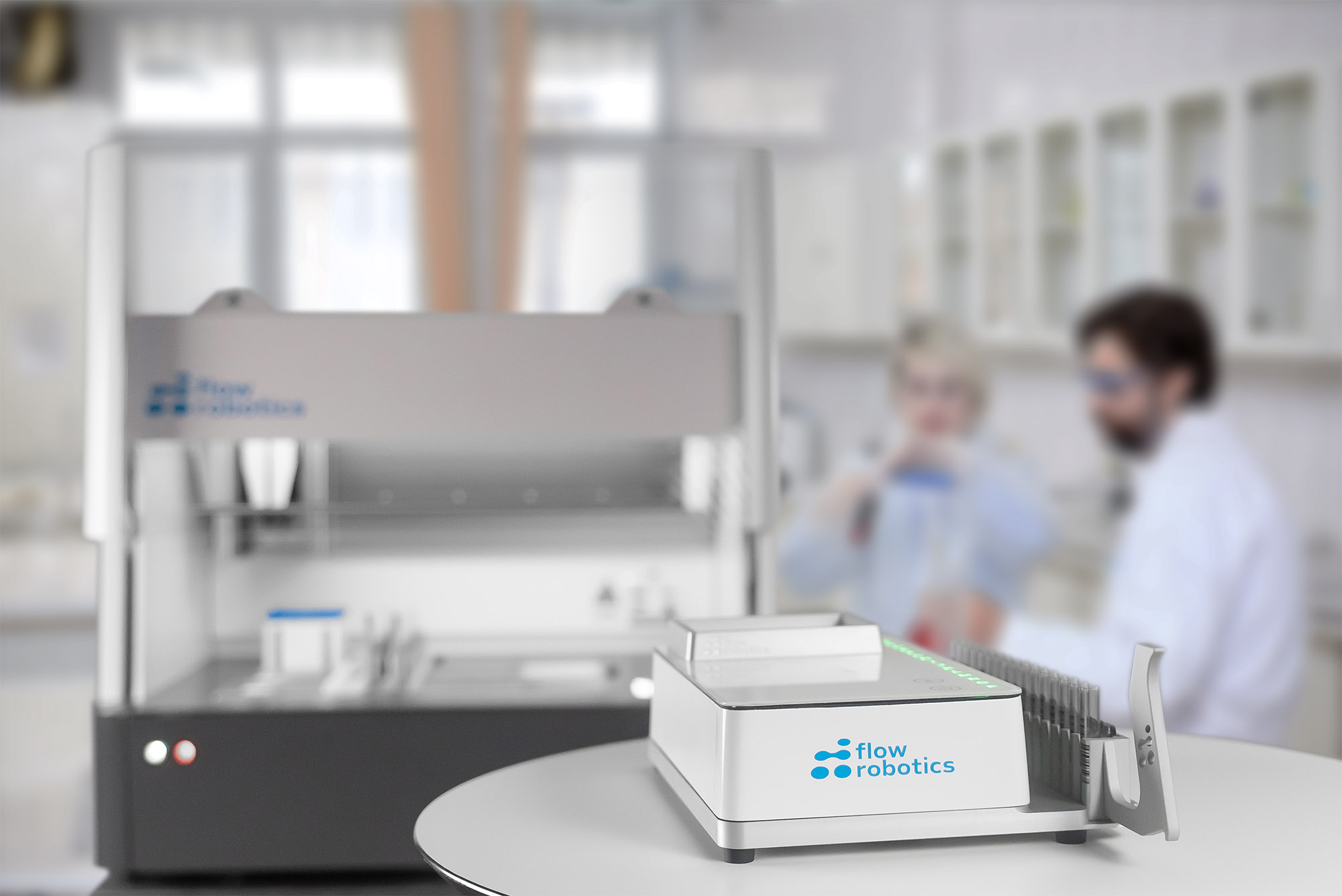As labs all over the world get into the automation game, it becomes increasingly important for automation to accommodate the terms they operate under. For many, this means that automation needs to be easy to use and affordable.
The flowbot® ONE – automation that benefits everyone.
The company’s main product is the liquid handling robot, flowbot® ONE, which aims at making lab automation accessible for everyone and breaking down the barriers that stand in the way. That’s why flowbot® ONE is one of the most user-friendly and flexible pipetting robots on the market.
The robot takes over many of the repetitive and burdensome manual pipetting tasks in a laboratory for applications such as e.g., PCR, qPCR, ELISA, NGS, LC-MS, GC-MS, Normalization, sample dilution etc.
Automated pipetting reduces the work-related injuries that come from working in fixed positions. It also increases the throughput, volume accuracy, reduces human errors and stress, and enables lab personnel to engage in other more valuable activities. All of this is vital for a smoothly operated lab.
Flowbot® ONE is a plug and play solution with 12 positions on the deck. The software is a web application that can be used in any browser. It does not require programming skills and can easily be adjusted if a procedure changes in a lab, making it a good way to future-proof a lab.
The robot is intended as a “one-fits-all” solution and the broad span of customers are proofs of that. It is especially a popular choice among those without automation experience, whether they are small agile labs that need flexibility or large high-throughput labs that need a reliable workhorse.

Putting an end to sample switching.
In Belgium, you can find DoCoLab – one of the few labs worldwide performing doping control analysis of a variety of athletes. They use flowbot® ONE to ensure an error-free workflow and gain full traceability.
DoCoLab receives samples from anti-doping agencies and sports federations and processes up to 84 urine samples per day.
“We use the flowbot for aliquoting to different tubes and plates. Afterward we do partial or complete sample preparation for LC-MS and GC-MS. It’s super important to avoid misplacements errors during this massive work,” explains Nicolas Van Haecke and adds;
“We observe almost no sample switching after implementing the flowbot® ONE. It is surprisingly easy to use. The software is very simple, and our lab technicians have had no problems with it at all. The simplicity of the plug & play solution is really ideal if you want to run more than one program on the same instrument,” he finishes.
Perfecting the NGS workflow.
At the Department of Food Science at the University of Copenhagen, a up to 15 research projects use the pipetting robot, flowbot® ONE, to purify DNA – one of the steps in the NGS pipeline.
PhD student Rasmus Riemer Jakobsen uses the flowbot® ONE in his PhD project that aims to understand how mother’s milk impacts the health of the child. DNA samples from the mother’s milk and the guts of the infant must go through 12 different steps before they are ready for sequencing. This amounts to around 1100 individual pipetting moves per plate.

“I can run 8 plates per day now and have managed to double my throughput, mainly due to increased walk-away time. I can use that time on research or analysis or to prepare for the next run (…) Since the user interface is so intuitive, it has a allowed me to make a simple protocol and, so far, even bachelor students have been able to start sequencing their own samples,” explains Rasmus Riemer Jakobsen.
What’s next.
Flow Robotics is always keeping an eye on what moves in the labs and developing new products and software updates to accommodate that. In fact, they have just launched a new sample tracking system to optimize traceability and eliminate misplacement errors.

